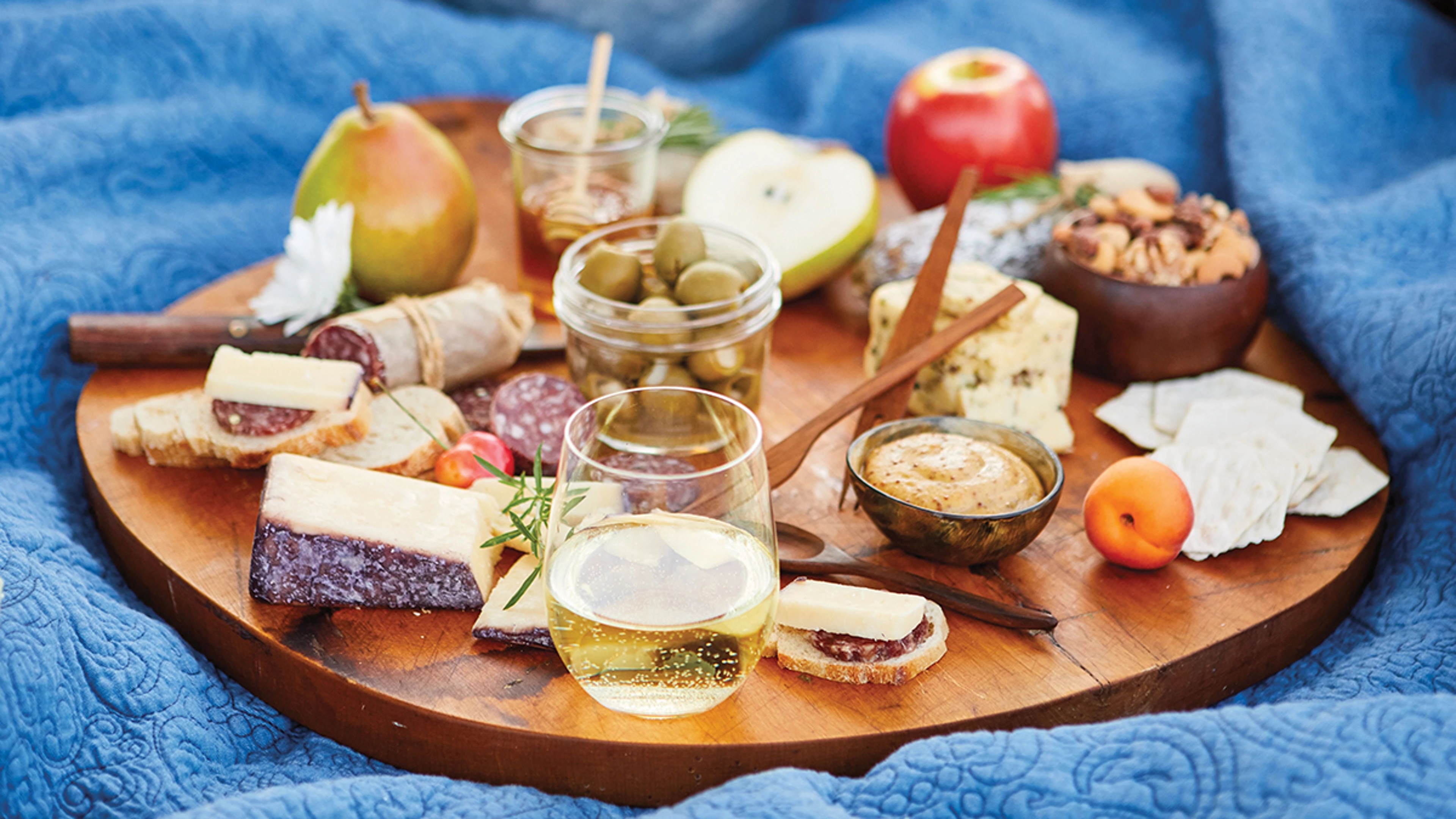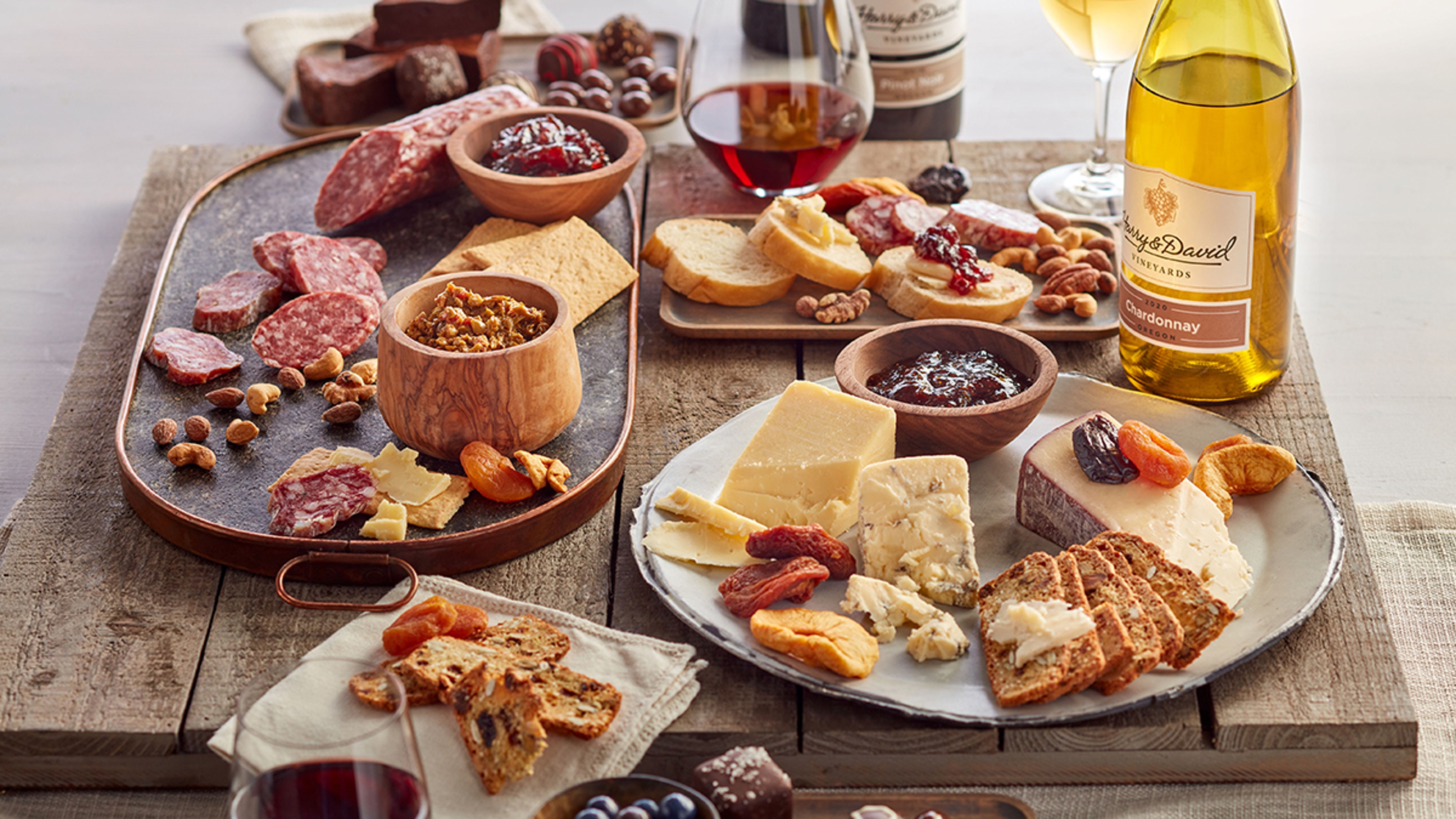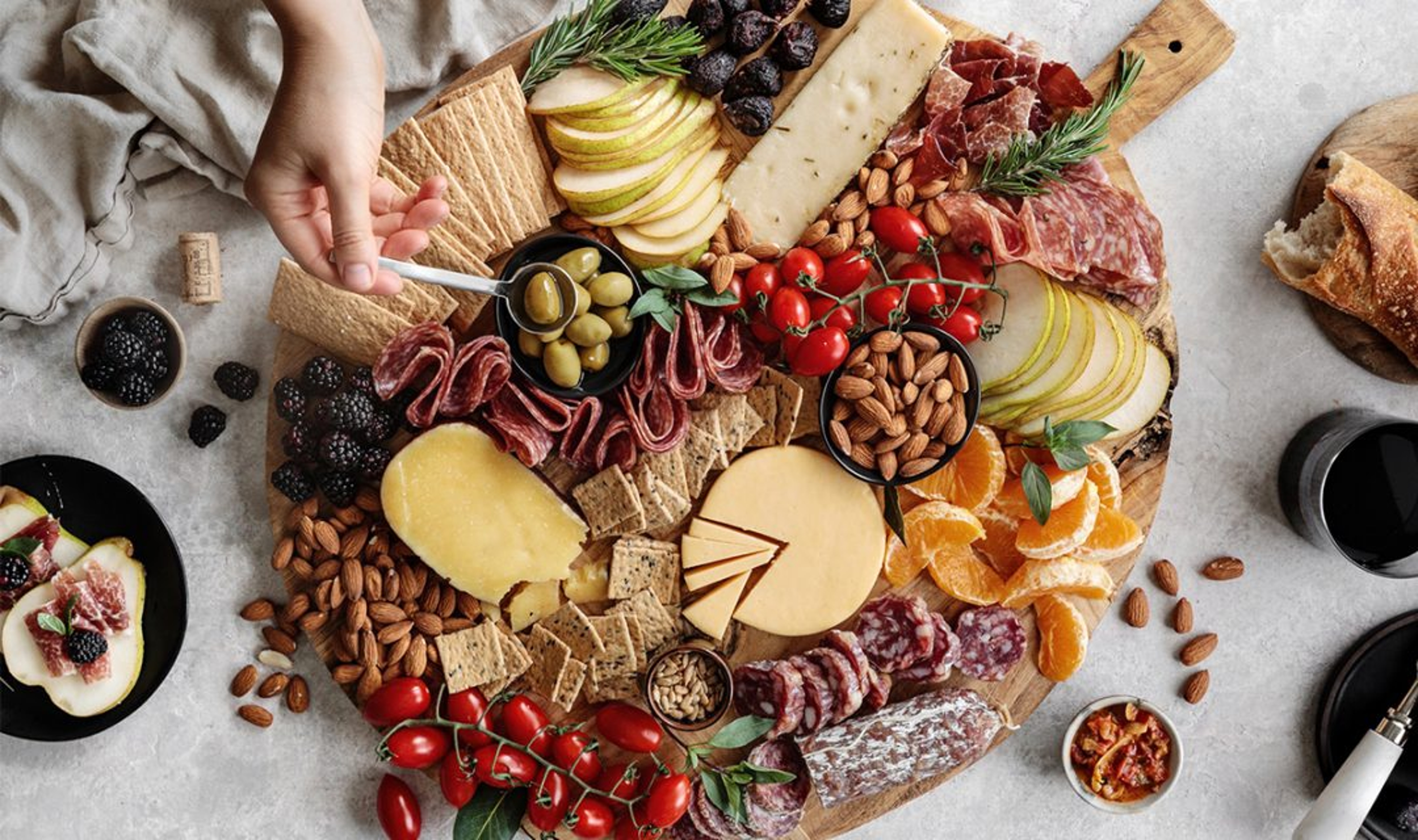The Definitive Guide to Charcuterie
The delicious history and continued attraction of a platter of cured meats and complementary treats.
Mar 03, 2025
Welcome to the wild, weird, and sometimes mysterious world of charcuterie.
How did an ancient form of preserving meat — mostly from pigs — evolve into a popular food to serve guests while entertaining? We explore that and so much more in this charcuterie cheat sheet, including its origins, key terms, and how to prepare your own slick and modern interpretation.
A very brief history of charcuterie
The word "charcuterie" refers to a pork butcher shop. A charcutier in France is a butcher. Many reports trace the advent of charcuterie to 15th-century France, where local guilds began to regulate food production in each city. Even before then, the Romans and Greeks were said to have developed a method for salt-curing meats, but it was the French guilds' work that led to the development of different styles of charcuterie production. This essentially laid the groundwork for the combining of varied meats, which led to the evolution of what we today call the charcuterie plate.
And, of course, this all happened long before people started putting chocolate and candy on charcuterie boards to try to go viral on TikTok. (To be fair, you can find some useful charcuterie hacks on TikTok, such as freezing prosciutto to make it more foldable.)
Charcuterie and salumi and cheese boards, oh my!
Many cultures have developed variations on the theme of curing, smoking, or cooking pork as a way of preserving and prolonging the use of the meat. Charcuterie expert Tyson Danilson, a specialty foods broker who works with Harry & David purveyors such as Fermin and Creminelli, says that, traditionally, many farmers and villagers in Europe raise a few hogs for the purpose of feeding their families throughout the year. Once harvested, the meat has to be used quickly or preserved in some way, he says. “That's where the rillettes, hams, and all these different things come together. It's a way to turn a whole pig that you've fed all year into something that will feed you for the next year."
The idea of combining items like charcuterie with cheeses, fruits, nuts, and wine can be traced back to pre-20th century farms and villages, for which the saying “What grows together, goes together" is somewhat of a mantra, according to Danilson. An example of this, he says, is Italy's Emilia-Romagna region, where Parma ham and Parmigiano Reggiano cheese would pair very well together — especially with a local wine, such as a sparkling light red Lambrusco.
Today, we have the benefits of easier sourcing; no more having to barter with your orchard-owning neighbor or buy a few bottles of chardonnay from the local vineyard. That can lead to an incredible variety of flavors, such as combining cured Italian meats, like salami or Spanish Iberico ham, with West Coast wine, along with pears and nuts. Try it for yourself.

6 common charcuterie terms to know
So many words can help expand not only your vocabulary but also your enjoyment of cured meats. There are different types of hams, such as thinly sliced prosciutto or saucisson sec, a thick, dry-cured sausage from France. Harry & David carries salumi, or Italian meats, from respected brands like Olli and Creminelli, known for variations such as spicy soppressata and tartufo, which is made with black summer truffles.
While charcuterie (France), salumi (Italian), and Spanish hams, such as Serrano or Iberico, are justifiably famous, many cultures that feature pork in their diet have variations on dried or cured sausage. Of course, in the United States, Southern country ham is a staple, Italian-style salami is a favorite at delis, and where would our pizza be without pepperoni?
The following six terms will help you when you take a seat at a wine bar and find charcuterie boards with fanciful French names or confusing Italian terms on the menu.
Confit
Confit
This refers to the process of cooking an ingredient immersed in fat, such as butter, olive oil, or the animal's own fat (like pork or duck). The cooking method is low and slow, resulting in a tender, melt-in-your-mouth meat (or vegetable) that can be served over bread or used in salads or stews, or to accompany starchy vegetables. Danilson notes: “Duck confit is a good example of [people saying,] 'Hey, we're gonna cure and cook these ducks and pack them in fat so we can have something to eat in the lean season,' and we continue those practices now because they're delicious."
Rillettes
Rillettes
Another French preparation, rillettes are meats or fish that have been chopped or shredded, seasoned, and preserved slowly in its own fat. The result is a thick spread that's served on sandwiches or as a sort of dip for crudités.
Salumi
Salumi
Not to be confused with salami — a preparation of dried ground pork with spices — salumi is more of a catch-all term for Italian preserved meats. Salumi are usually pork products, such as prosciutto, the spicy and spreadable 'nduja, and the proto-baloney, mortadella. Oh, and just to make it more confusing, salami is, indeed, salumi.
Terrine
Terrine
This is a dish made from ground meats (often including offal, or organ meat) with a mix of ingredients that may include vegetables, boiled egg, seasonings, and herbs packed into a mold and cooked in a water bath. It's often topped with gelatin then served in a decorative or simple container and sliced to serve with bread.
The art of the charcuterie board
A charcuterie board is just a fancy term for a snack tray or selection of what trendy restaurants call “small plates." The concept exists across many cultures, from Spanish tapas to Korean banchan to Mediterranean mezze to Japan's otsumami. While meats are always central to a charcuterie plate, cheese, breads and crackers, olives and nuts, fruits, mustards and jams, and other items have come to define what Americans expect from these spreads.
That doesn't mean you can slap a bunch of meats and cheeses on a wooden or slate board and serve it to friends or family. Crafting a charcuterie board is an art.
“The main thing to consider when building a charcuterie plate at home — whether it's made up of three things or 23 things — is having different styles of charcuterie to create contrast and keep it pleasing," Danilson says. He emphasizes the need to find meats with different textures and suggests mixed dried and cooked meats (such as hard salami with prosciutto), as well as being mindful of salt levels in the meats and accompanying items. “If everything on the plate is salty and intense, it can be overwhelming," he says.
Above all, it's important to have fun with your presentation. Find a way to incorporate a range of flavors and items depending on the audience — TikTokers even have vegetarian charcuterie boards in their feeds (though these bear more resemblance to crudité platters). Make sure to have delicious wines on hand, too. You can prepare everything in advance, giving you the chance to not only impress your guests and feed them but to spend time outside the kitchen.
.svg?q=70&width=384&auto=webp)
















